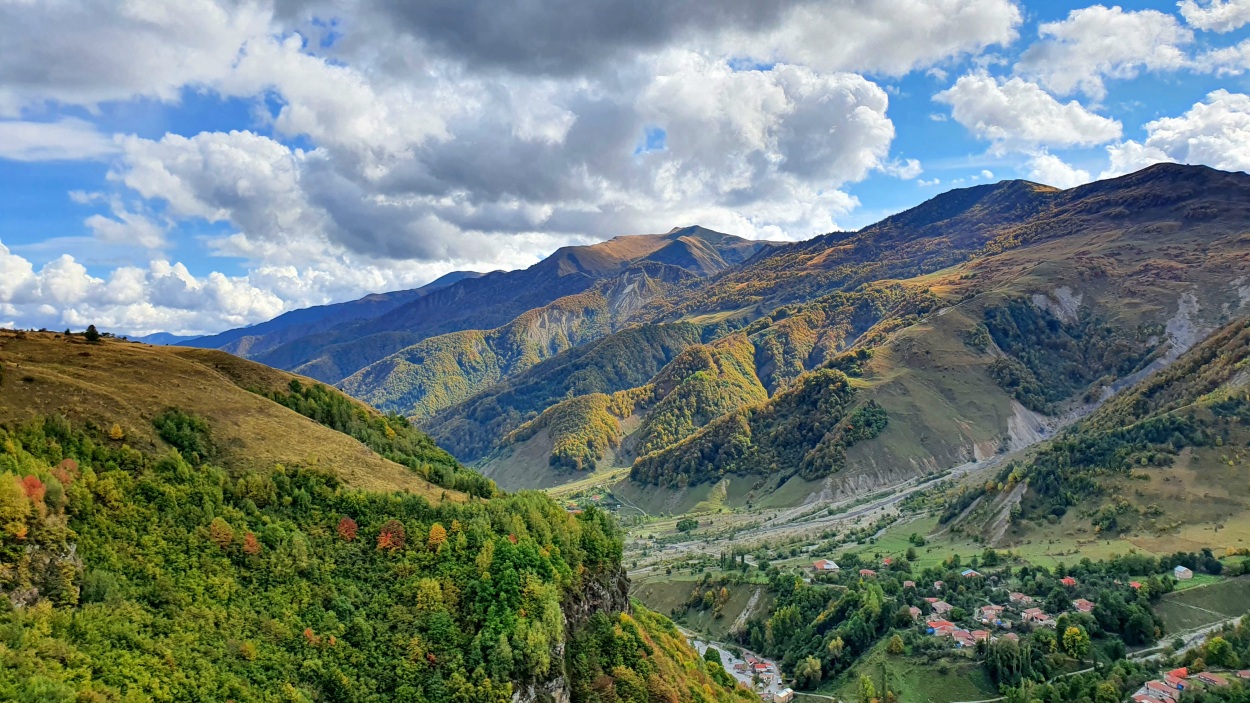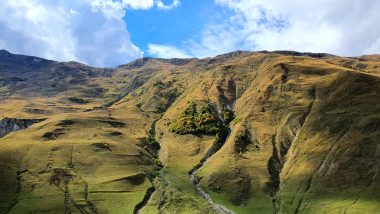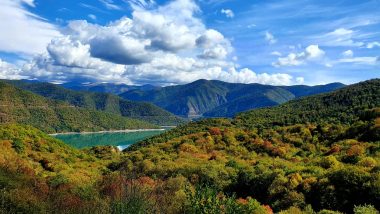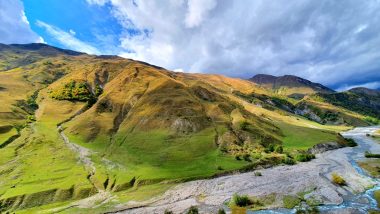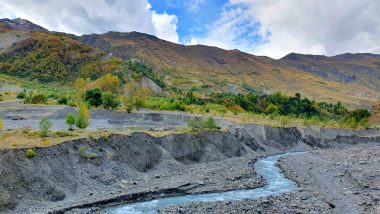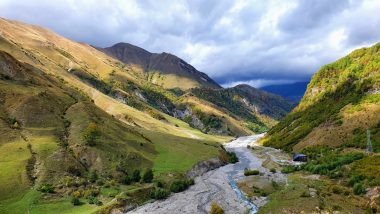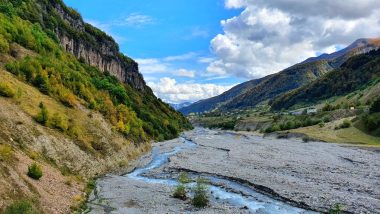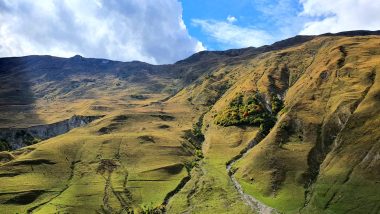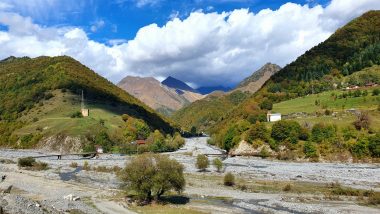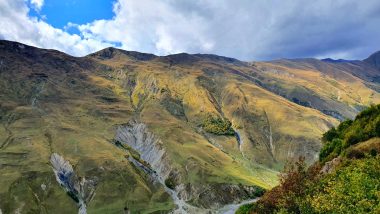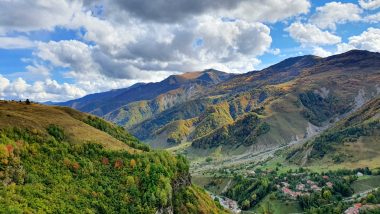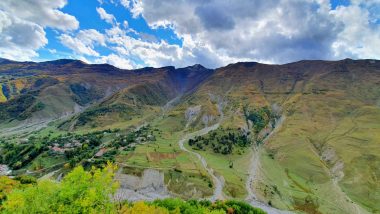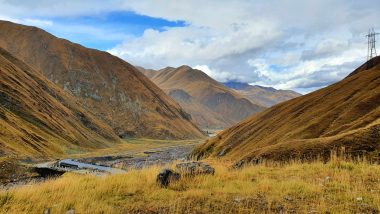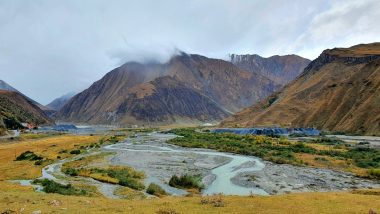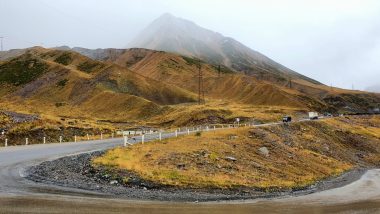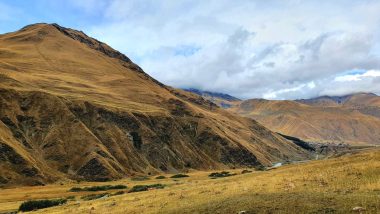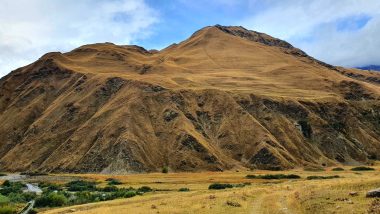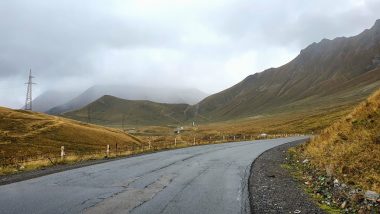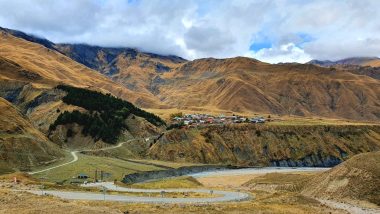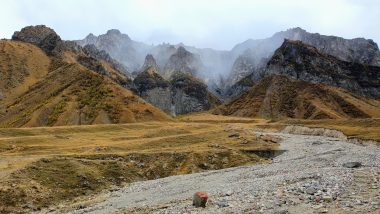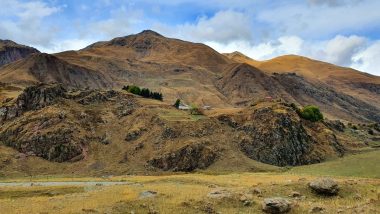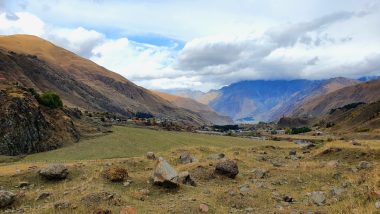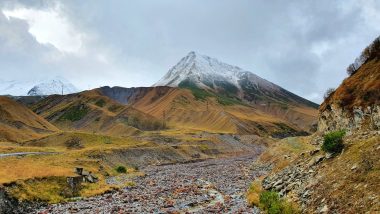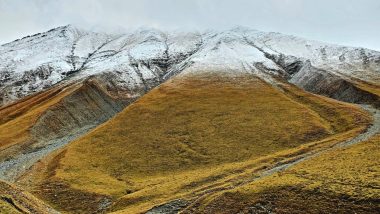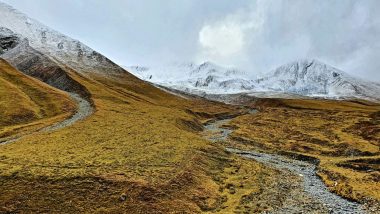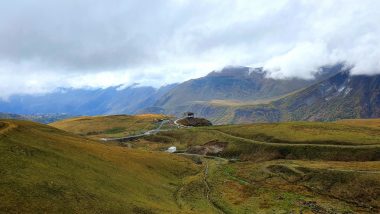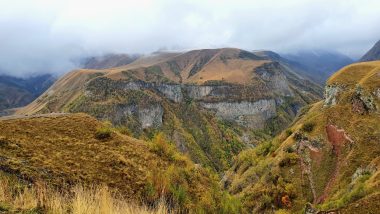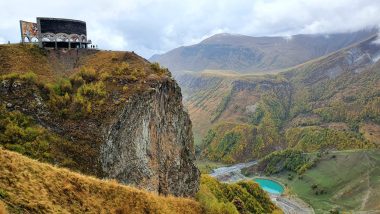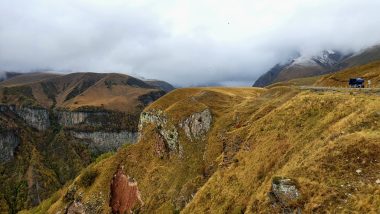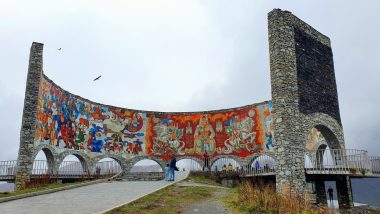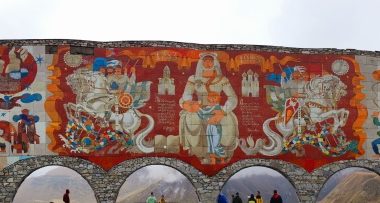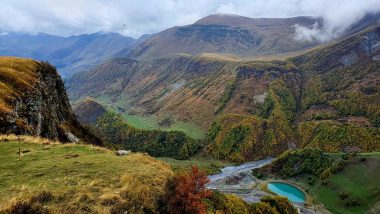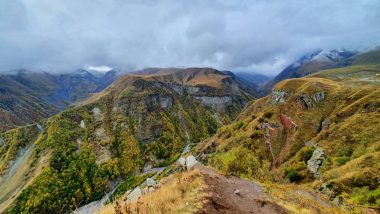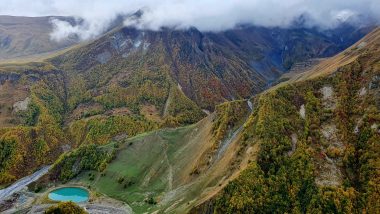We were lucky with the weather at this time of the year. Even though it was busy and partly under construction, we climbed it up from Ananuri to Stepantsminda in a few hours. The E117 road after Stepantsminda (Kazbegi) continues to the Kazbegi-Verkhni Lars border crossing before finishing at Vladikavkaz, the capital of Russia’s North Ossetia-Alania Oblast. It runs for 212 kilometers and reaches its maximum altitude of 2379 meters at Jvari Pass. Traders and invaders first carved it out in the 1st century BC. There have been many iterations over the years, but its function as a land bridge between Georgia and Russia, Europe, and Asia, has remained the same for centuries. In the 1780s, thousand-odd soldiers were tasked with converting the narrow horse track into a “regular highway” fit to accommodate carriages. A few decades later, when the Russian Empire annexed Georgia, the road was improved upon again, and iron bridges were added. As the only land link between the Trans-Caucasus region and Russia, the road is still an important thoroughfare. Today, lorries traveling between Russia, Turkey, and beyond ply the route. Unfortunately, galleries added to protect the road from avalanches aren’t wide enough for two trucks to pass each other safely, so the traffic must take turns. In addition, the tunnels are only open for a few hours a day, so it’s not uncommon for drivers to wait days – even weeks if the weather is terrible – to pass through. Although the road is open year-round, the section between Gudauri and Kazbegi is prone to avalanches in winter and rockslides in spring. We also stopped at the socialistic Russia–Georgia Friendship Monument built in 1983 to celebrate the bicentennial of the Treaty of Georgievsk and the ongoing friendship between Soviet Georgia and Soviet Russia. Located on the Georgian Military Road between the ski resort town of Gudauri and the Jvari pass, the monument is a large round stone and concrete structure overlooking the Devil’s Valley in the Caucasus mountains. Inside the memorial is a large tile mural that spans the whole circumference of the structure and depicts scenes of Georgian and Russian history.


